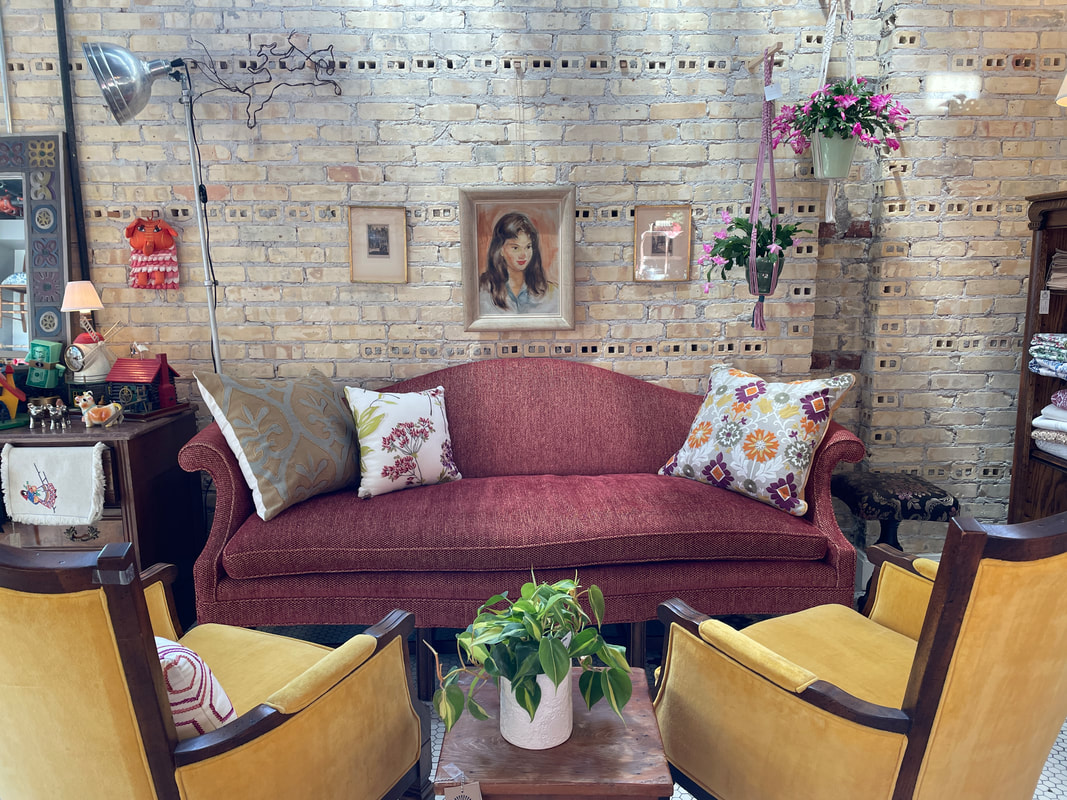The Upholstery Process
The decision to reupholster a piece of furniture is simultaneously practical and sentimental. We are huge proponents of refurbishing furniture, but upholstery is very labor-intensive, and sometimes it just doesn't make financial sense to reupholster a piece when you can purchase something new for a reasonable cost. However, there are exceptions to that rule. If your piece is vintage or antique, has sentimental value, fits your space perfectly, or has great lines, then reupholstery is a great option.
To get started, email us a picture and brief description of your piece, and we'll work up an estimate of costs and timeframe for you. If you decide to move forward, then we'll put your project on the schedule and you can come by the store where we'll help you select fabric.
Prior to starting the work, we'll discuss a game plan with you, but often we have to adjust as we go, depending on what we find once we get inside the piece. Your labor estimate will be a price range to account for these nuances. While your furniture is in the workroom, you can plan on us:
To get started, email us a picture and brief description of your piece, and we'll work up an estimate of costs and timeframe for you. If you decide to move forward, then we'll put your project on the schedule and you can come by the store where we'll help you select fabric.
Prior to starting the work, we'll discuss a game plan with you, but often we have to adjust as we go, depending on what we find once we get inside the piece. Your labor estimate will be a price range to account for these nuances. While your furniture is in the workroom, you can plan on us:
- Assessing the structural integrity
- Making basic repairs to wood frames
- Reattaching loose or disconnected springs and webbing
- Replacing or supplementing padding as needed
- Attaching new padding and trimming to your specifications
- Communicating with you about recommendations and the progress of the project
Clarifying Your Vision
We love to chat with store visitors to help them find the perfect fabric for their upholstery projects, new home decor accents, or DIY projects. If you want additional help ironing out the bigger picture, our in-home design consultations are the perfect solution to help get you pointed in the right direction. Our designer will come to your home to discuss your vision and help make sense of what changes need to be made to realize your vision. The designer will lean into stylistic changes and furniture pieces you already own. From suggesting suitable paint colors and window coverings to reimagining the form or function of your furniture and room layouts, they'll help you create a game plan for getting the big elements in place. After the meeting, you'll receive a written report that summarizes the discussion, offers suggestions, and details action items. It's the perfect fit for the person who wants to have a real hand in redesigning their space and just needs a jumpstart to get the ball rolling. If you decide that you'd like a bit more guidance, you can continue working with your designer for an hour here or there, checking in for support with key decisions or they can even create a design plan and support you throughout the duration of the project. With a low-pressure collaborative approach, a focus on utilizing what you already have, and transparent pricing, whether you need help with one room or the whole house, our designers can help you love your home again.
Beyond Furniture
Whether they're functional or decorative, rich textiles enhance a home's design. From cushions for built-in seating and new throw pillows for the living room, to new table linens for a holiday dinner, or drapes for the guest room, we can help guide you from fabric selection through the design and creation of your custom home decor.

